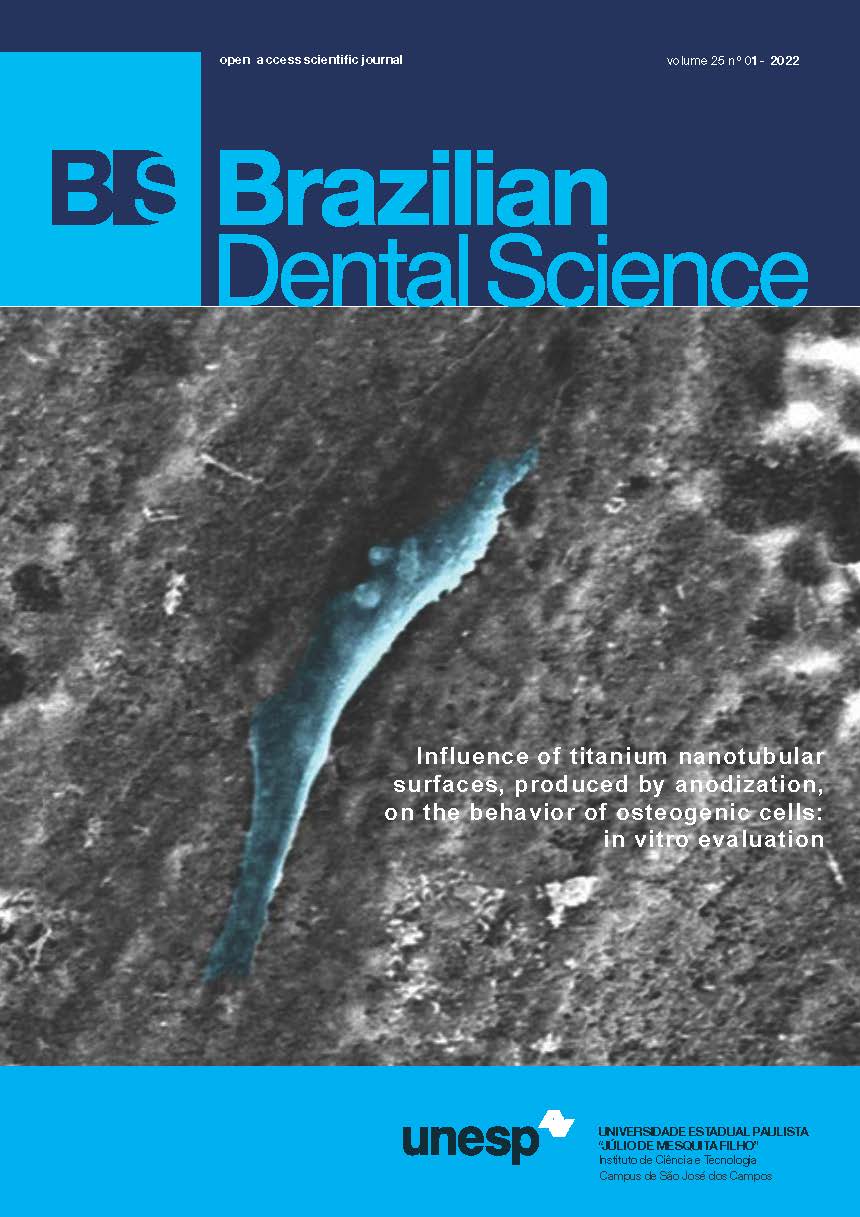Impact of different scan strategies and implant angulation on impression accuracy of full arch multiple implant: an in vitro study
DOI:
https://doi.org/10.4322/bds.2022.e3006Abstract
Objective: to evaluate the impact of three different scan strategies and implant angulation on impression accuracy
of an intraoral scanner for full-arch multiple implant scan. Material and Method: A maxillary edentulous model
with six implant analogs served as a reference model. The four anterior analogs were positioned parallel to
each other, the distal right and the distal left was placed with an angulation of 15o and 20o, respectively. Thirty
impression were performed using an intraoral scanner (CEREC Primescan). The master cast was digitalized with
an industrial reference scanner (ATOS Core 80). All scans were converted to standard tessellation language (STL),
superimposed on the reference scan with a 3d inspection software (GOM Inspect Professional 2019) and then
analyzed. Results: All linear distances presented equivalence [p<0.01] to those found on the reference scan for
all scan strategies. All scan strategies presented a tendency of negative means for linear distances except for d4
in strategy C. All angular distances did not present equivalence [p=0.05] to those found on the reference scan.
Significant 3D deviations [p<0.05] were found between strategy B (0.02 ± 0.01) and C (0.05 ± 0.04) for d1.
In all others linear and angular distances no statistically significant difference was found between strategies A,
B and C. Conclusions: There was no statistically significant difference between strategies A, B and C except for
d1 in strategy B and C; Implant angulation did not affect the accuracy of the CEREC Primescan IOS.
KEYWORDS
Precision; Trueness; Edentulous jaw; Dental implant; Dental impression technique.
Downloads
Downloads
Published
Versions
- 2022-01-21 (2)
- 2022-01-03 (1)
How to Cite
Issue
Section
License
Brazilian Dental Science uses the Creative Commons (CC-BY 4.0) license, thus preserving the integrity of articles in an open access environment. The journal allows the author to retain publishing rights without restrictions.
=================




























